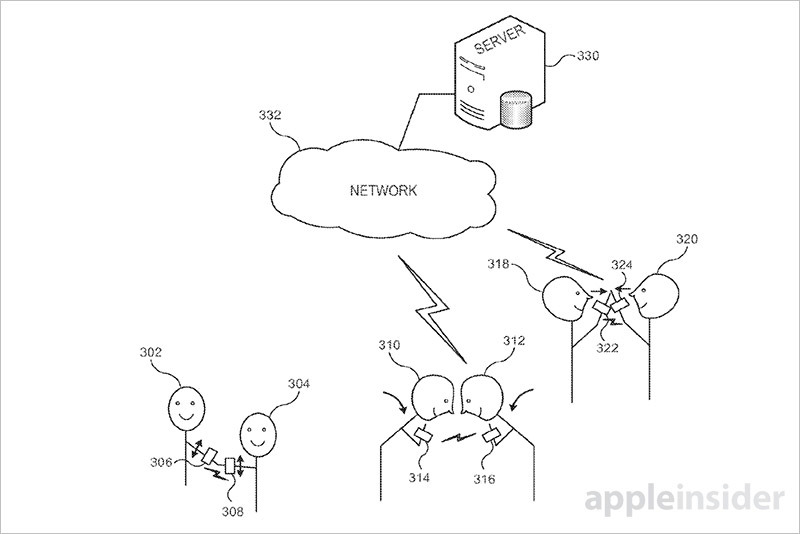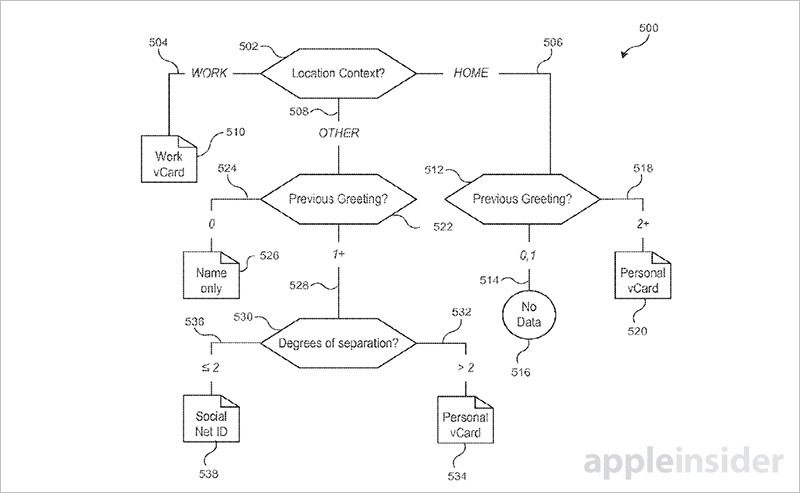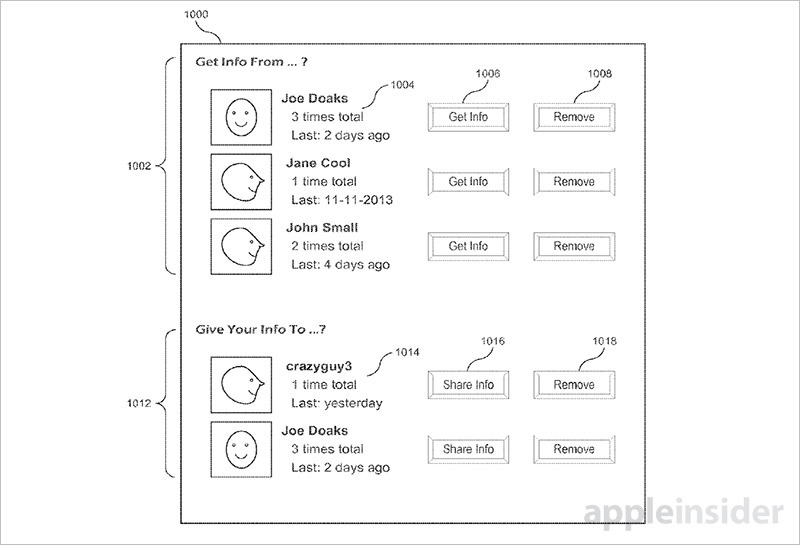Future Apple Watch owners might exchange data with a handshake or fist bump
Last updated
An Apple patent application uncovered on Thursday details a method of triggering the automatic exchange of information between two wearables with a simple greeting gesture, like a wave or fist-bump.
As published by the U.S. Patent and Trademark Office, Apple's filing for "Gesture-based information exchange between devices in proximity" is a comprehensive application describing a method of facilitating the secure transfer of data between two nearby portable devices, including wearables like Apple Watch, over an ad hoc wireless connection.
According to the document, Apple is proposing a simple, yet intuitive, interface for triggering said transfers. Similar to old-school iOS app Bump, the system works by detecting user gestures, in this case a "greeting event," which then activates a customizable data sharing process.
The backend procedure is expectedly much more sophisticated than "bump-to-send" incarnations, with device context, security and user privacy all taken into consideration.
In some embodiments, two users with wearables — smartphones are also mentioned as potential candidate devices — initiate the process with a greeting event. These gestures include any motion that brings one user device in close proximity to another device and incorporates a distinctive movement or acceleration.
Gestures can involve a first user making contact with another user, for example a handshake, high-five, hug, hug with pat on back, fist bump or similar movement. Alternatively, the two users might also activate data transfer operations with a bow, wave or salute.
Transfer gestures can be defined as "natural," meaning movements users of a given culture commonly perform when meeting one another. Other embodiments allow for "artificial" gestures, or movements specified for initiating information sharing operations. For example, a user might perform a handshake with their non-dominant hand, or left hand, when they normally use their right.
In all cases, however, the greeting event must be defined as deliberate and recognizable by sensors onboard a given device. Proximity constraints further reduce false positives, helpful when trading information in crowded spaces.
As for information shared, Apple notes the invention supports any form of digitized data that can be sent across a wireless connection. Contact details, photos, media files, calendar events and more are all fair game. In addition to information stored locally on a wearable device, the method also allows for data to be pulled from a host iPhone or the cloud.
Apple includes a number of safety protocols and filtering schemes to ensure the right information goes to the right people. For example, the process can take into account where a sharing session is initiated — if a users is at work, only work-related events and contacts are sent to a receiving device.
Aside from sharing data, greeting events can also generate data for sharing across social media networks. In some embodiments, for example, a successful greeting event might invoke a Twitter or Facebook post regarding the meeting of both users.
Perhaps most interesting is Apple's context-based decision making process. The technology automatically determines what information to share and with whom. One example notes users might want to share only social media information with a person they just met, keeping personal data like a home phone number or address private.
Device identifiers, location data, user histories and other deep metrics are required for the system to work correctly. Apple intimates, but does not specifically mention, artificial intelligence as an ideal technology for proceeding through the decision making tree.
Another precautionary measure integrates single-use cryptographic keys which can be tied to a sharing session or a specific gesture. The process might also be only partially automated, meaning users can also elect to share information with another person via an onscreen interface.
Considering the user privacy implications associated with today's invention, it is unlikely that Apple will implement the above described technology anytime soon. A less involved — and less automated — solution could conceivably make its way to market, but Apple will first have to build out a database of greeting gestures and, more importantly, a working decision-making AI.
Apple's gesture-based data exchange invention for Apple Watch was first filed for in June 2016 and credits Brent W. Schorsch, David J. Shoemaker, Eugene Dvortsov and Kamlesh Kudchadkar as its inventors.
 Mikey Campbell
Mikey Campbell
















 Amber Neely
Amber Neely
 Thomas Sibilly
Thomas Sibilly
 AppleInsider Staff
AppleInsider Staff
 William Gallagher
William Gallagher
 Malcolm Owen
Malcolm Owen
 Christine McKee
Christine McKee










27 Comments
Fist bump!
how are teenagers affording this gear?
Didn't Apple make fun of the fist bump one year at WWDC? If I remember correctly it was when Craig Federighi was announcing AirDrop.
Wasn't this technology used in Android phones about 6 or 7 years ago?
Yep, thought so.